For current students, whether that’s as an undergraduate or graduate student, we offer an internship program to gain hands-on experience working as a dolphin field biologist! So what’s it like and what can you expect to learn? Read on.
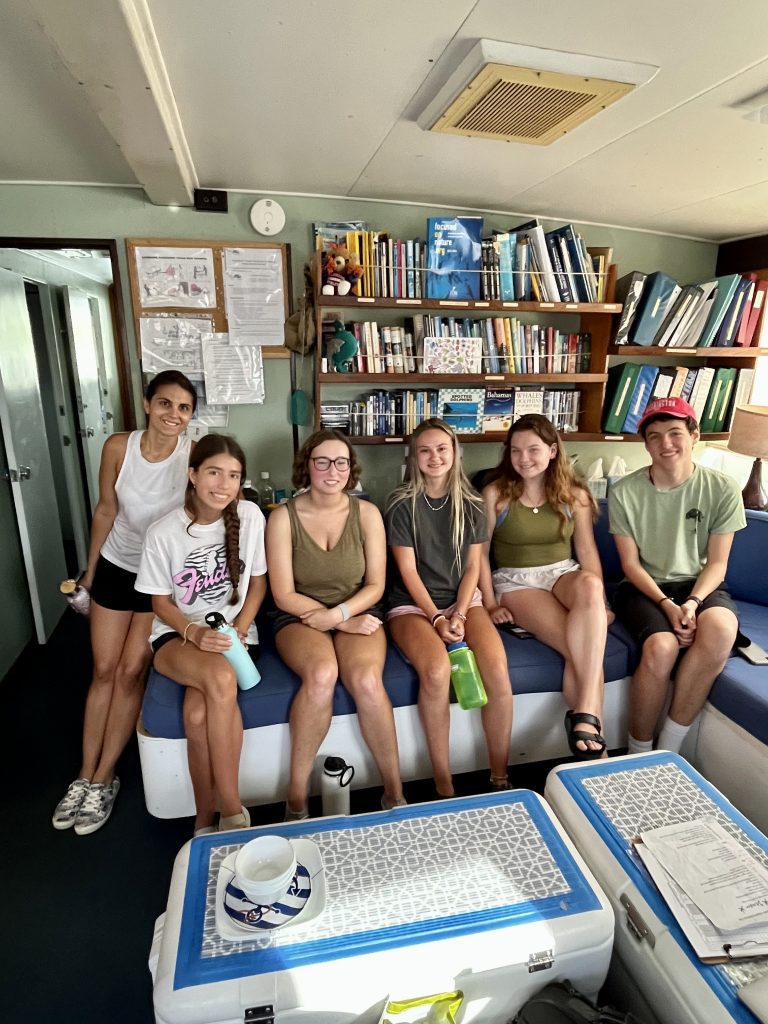
A group of interns getting ready for their trip!
Heading to Bahamas
Interns arrive to greet the crew at our marina in Riviera Beach, Fla., typically the morning of our trip. Before crossing to the Bahamas, they get a safety talk about the boat, and reminders to wear sunblock, hydrate and always swim with a buddy. Inevitably, someone decides they want to tan on the 6-8 hour crossing over to the Bahamas — and gets burned. Ouch! We aren’t kidding when we say you will get sun exposure, even with sunblock!
Upon Arrival
Once we get to port and arrive at customs, we have some time to spare. So, we do a dolphin briefing, often led by our trip leader, Cassie Volker-Rusche, the WDP research assistant and former graduate student. Cassie goes over what to do if we see dolphins and how interns are split into teams in the water, and how to prepare for the day, like getting up by 7am for breakfast and to change into swim gear. Sometimes, the dolphins show up at 6am, and if you’re ready, you go in!
This is also the time when they are introduced to the photo-ID assignment, to practice their ID sharpening skills. Basically, they are given photos of animals and told to figure out who they are based on our photo catalog. Interns get a chance to use either their cameras or our cameras to practice their photo-ID and observation skills in the water too. They can do things like count the different age classes based on spot pattern, try to follow and track and individual, take ID shots, and even try and determine the sex of an individual. We don’t expect everyone to master this right away – it’s an adjustment and we know everyone is also just getting used to the idea of being in the water with large animals, like dolphins.
Sometimes, we tell them, it’s best to just down the camera and be in the moment. There’s nothing like connecting eye-to-eye with wild dolphins who choose to interact and let you into their world.
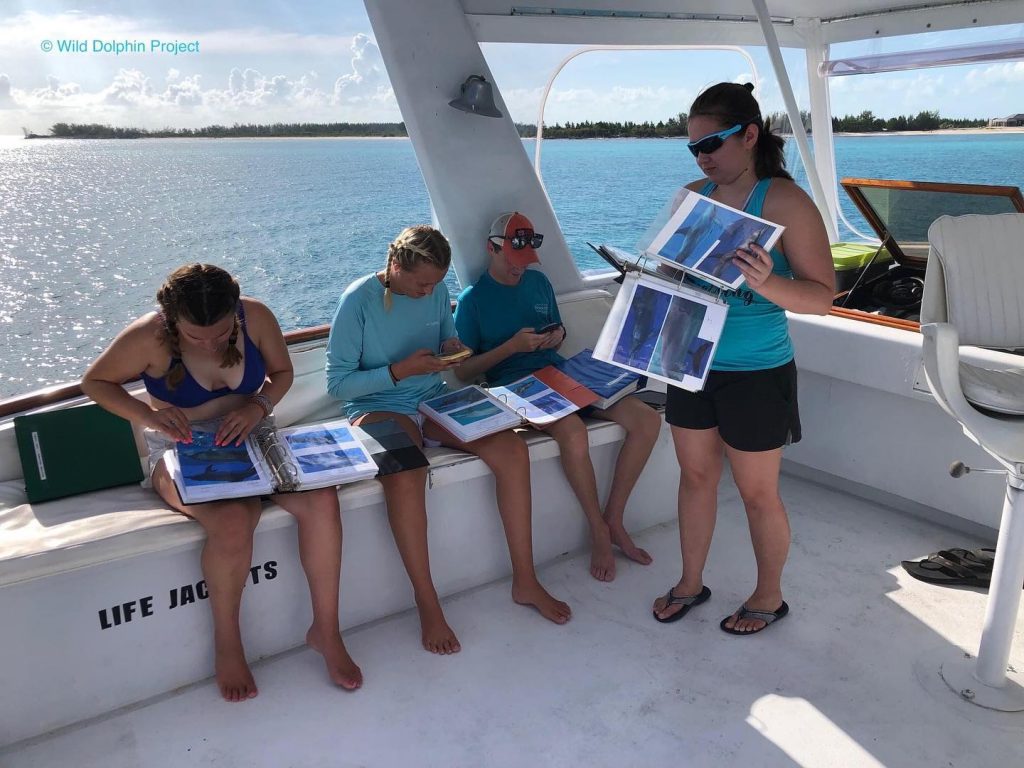
Interns working on their photo-identification assignment.
The interns will also get briefed on “Dolphin Watch.” Everyone gets two or three 1-hour shifts throughout the day to search for dolphins and log when we find dolphins but also environmental data, as well as track our location as we survey — and anything else interesting of note. This gives them a chance to learn things such as the Beaufort scale, which measures sea state, how to use a compass to tell direction (yes, we get many who don’t know how to do this before their internship), how to estimate cloud cover and tell wind direction.
Off to Find Dolphins
Once we clear customs, we are off for our first day to search for dolphins. Interns start their watch, and everyone settles in.
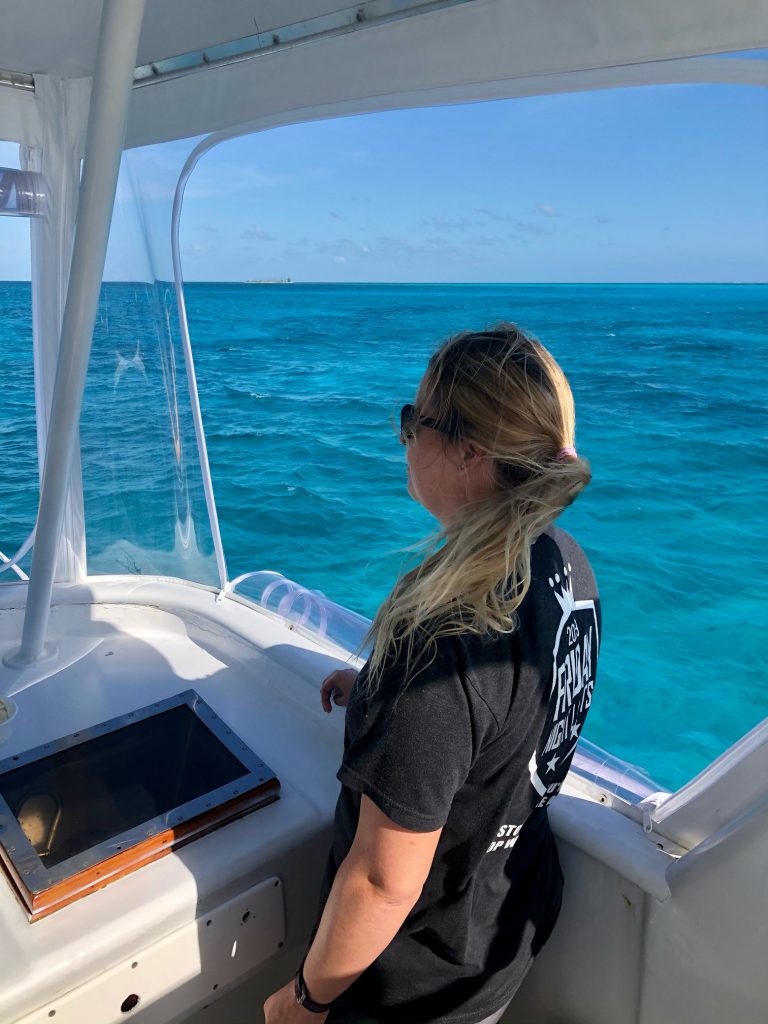
Dolphin Watch, not a bad place to be.
Once we find dolphins, our crew gears up and one of the intern teams. They quietly slip into the water behind the researchers and observe the behaviors going on, such as mating, nursing or fighting. If the dolphins are in a playful and curious mood, interns have the chance to play by diving and spinning with the individual animals. No one is ever allowed to touch, chase or harass the dolphins. Everything is on their terms. There are times when the dolphins give us cues they don’t want us around, and if that’s the case, we leave.
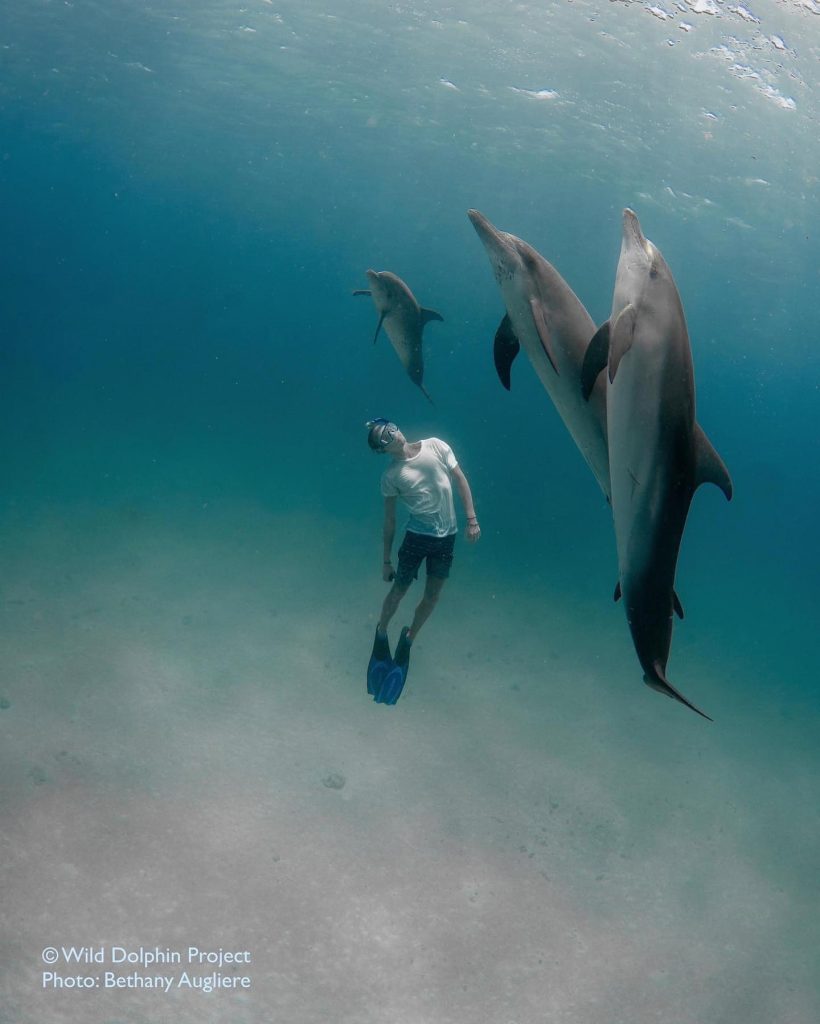
One of our graduate student interns diving with some dolphins who were very playful and curious that day.
Throughout the trip, students also give presentations about a conservation topic of choice to practice their oral presentation skills. We also have the chance to take snorkel breaks on shallow wrecks and reefs.
Living aboard with 11 other strangers can be a new and intimidating experience. But, we do our best to ensure everyone is having a good time and most importantly, safe. Most of our crew did internships to get their start in the field and we are honored to do the same for aspiring marine biologists! We are there to answer lots of questions anyone might have, especially about our different experiences, getting into graduate school etc…There’s a wealth of information of experience on board — take advantage of that.
And on another note, by the end of the trip, many interns create bonds that last years and years.
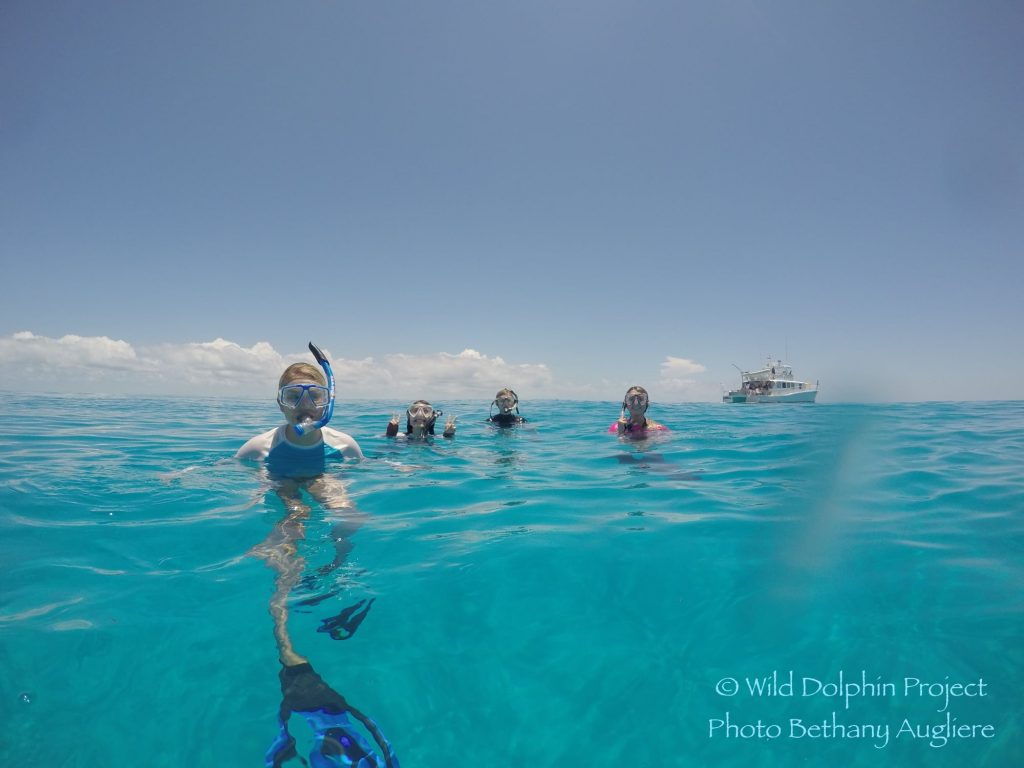
A group of interns after a successful encounter with dolphins!
Recommendations
We know not everybody comes from a background where they have a lot of access to water. However, we strongly encourage everyone to buy their gear ahead of time and practice with fins and a mask/snorkel – even in the pool. You want to make sure everything fits well and you are comfortable with putting your face in the water in a mask and breathing through a snorkel. It may seem easy enough, but it can be a little intimidating — especially if we are swimming through choppy waters. It’s not always flat calm!
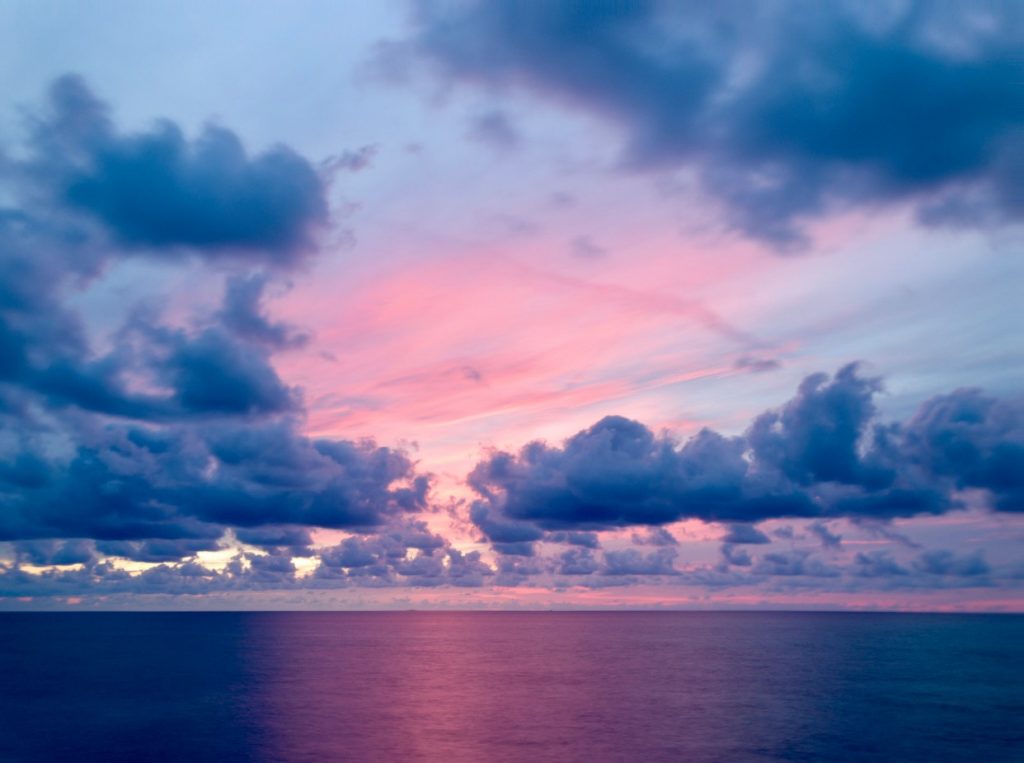
We have the best views.
More Information
For more information, such as how to sign-up click here.
We also have blogs about our research crew that you might be with, such as Cassie or Liah.
